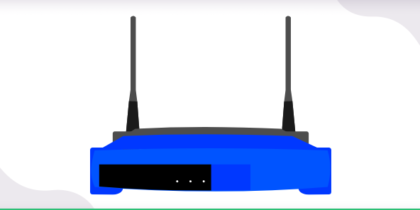Table of Contents
Apache Tomcat is used as HTTP software. It allows the users to run Servlet and JAVA Server Pages that are based on web applications. For a better Apache Tomcat experience, open all ports on your router. Learn how to open ports with the guide Apache Tomcat.
Requirements to Port Forward Apache Tomcat
Just before you begin with the process of port forwarding, make sure you have the following things:
- Downloaded and installed the Apache Tomcat server.
- The IP address of your router.
- IP address of your device.
TCP and UDP ports of Apache Tomcat for your device as mentioned in the section below.
Step-by-step guide on how to port forward Apache Tomcat
Now that you have the above details noted down, you can move to the next stage of Apache Tomcat port forwarding:
- On your web browser address bar, type your router’s IP Address/Default Gateway.
- Log in with your router’s credentials (username and password) to view your router’s firmware settings.
- Navigate to the port forwarding section of your router.
- Click on Port Forwarding.
- Enter the IP address of your device in your router in the correct box.
- Put the TCP and UDP ports of the Apache Tomcat server in the boxes in your router. The default Apache Tomcat port number is 8080. And then click the apply button.
- And you’re done. Restart your router to let the changes take effect.
- Once your changes take effect, now you can host an Apache Tomcat server and let your friends connect to it as well. To let them connect to it, you need to provide them with the hostname you are using, along with the port number. For example, ‘hostname.domain.com:25565’.
Apache Tomcat ports needed to run
To access Apache Tomcat online and create a server without any interruptions, you’ll have to allow access to certain ports on your firewall. The default Apache Tomcat ports are:
| TCP Port: | 8005, 8009, 8080, |
Quickly and safely open ports using PureVPN
Opening a port shouldn’t be complicated. With the Port Forwarding add-on, it’s as simple as 1, 2, and 3!
Ports to forward on devices
Ports to run on PC:
| TCP Port: | 8005, 8009, 8080, |
How to open ports behind CGNAT
What if your ISP performs CGNAT? Most ISPs perform CGNAT (Carrier-grade Network Address Translation) to conserve bandwidth and assign a single IP address to multiple users connected to the same internet network. However, CGNAT makes it difficult for you to open ports on the router.
To get around the CGNAT issue, you can use the Port Forwarding add-on to bypass this problem and port forward routers without hassle.
Here’s more information on how to use PureVPN’s Port Forwarding add-on and bypass CGNAT in a few clicks.
Quickly and safely open ports behind CGNAT:
Opening a port shouldn’t be complicated. With the Port Forwarding add-on, it’s as simple as 1, 2, and 3!
PureVPN’s Port Forwarding Add-on
A secure way to open all ports
To most people, port forwarding is quite a demanding task. For starters, every router has a different console, which often makes it difficult to navigate to specific settings.
Secondly, you won’t always be able to open Apache Tomcat ports on your router if your ISP restricts the ports. Yes, you heard that right! ISPs are notorious for blocking ports due to security reasons. If ISP isn’t the reason behind a blocked port, then perhaps it could be your operating system’s firewall.
Well, you can eliminate all these problems on all your desired systems with PureVPN’s Port Forwarding add-on. Through the Port Forwarding add-on, you can allow all ports, disallow all ports, and allow specific ports.
Frequently Asked Questions
What ports need to be open for Tomcat?
The tomcat binding ports are 8005, 8080, and 8009. In case you have another tomcat instance running on the same server or another application like JBoss Application Server, these ports are likely already used.
What default port does Apache Tomcat use?
By default, Tomcat uses port 8080.
Is Apache Tomcat a TCP or a UDP port?
Apache Tomcat is a TCP port. The TCP ports are 8005, 8080, and 8009.
Can Tomcat run on port 80?
Yes, just change the port attribute from 8080 to 80.
How to port forward apache from port 80 to 8080?
- Open Apache Config File
- Change Apache Port Number
- Open Virtual Host Configuration
- Restart Apache Server



